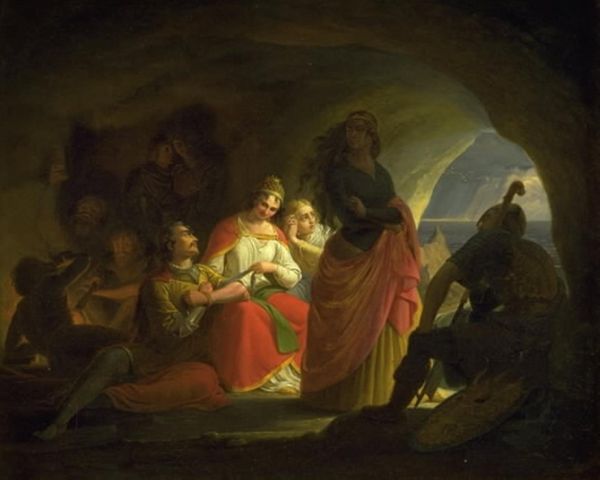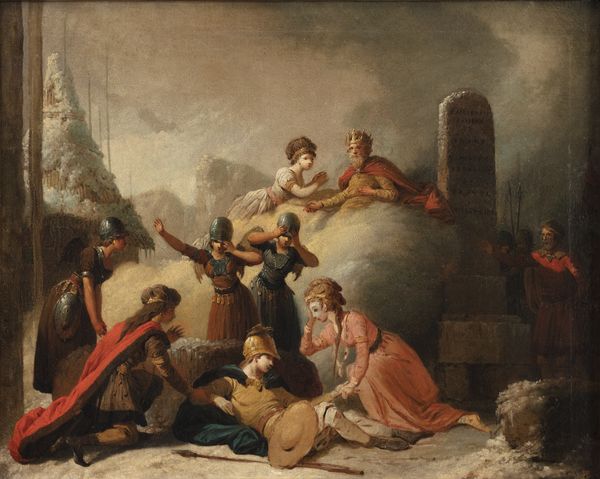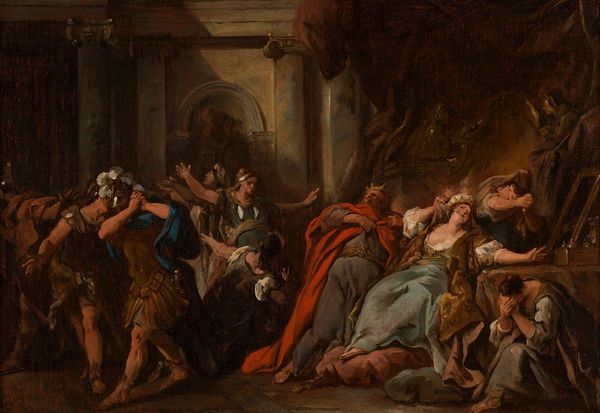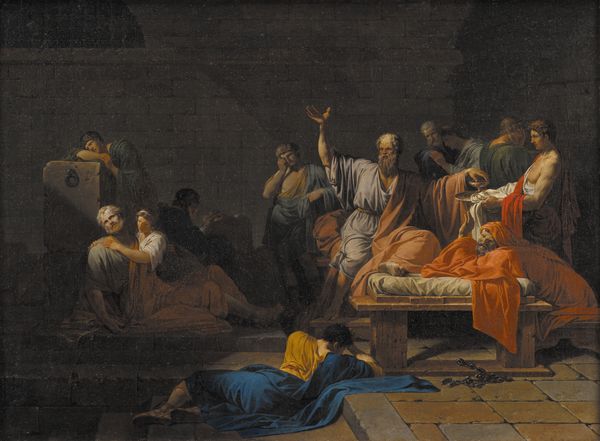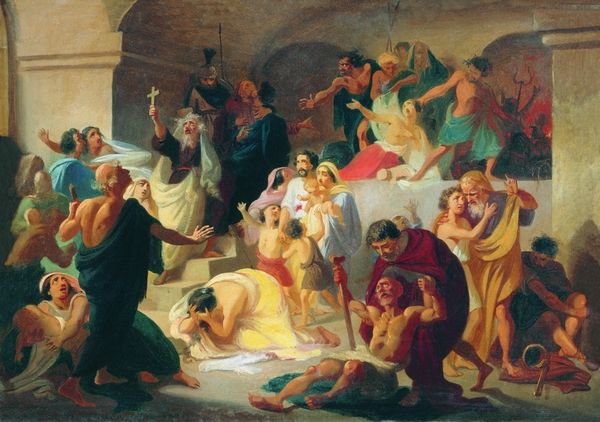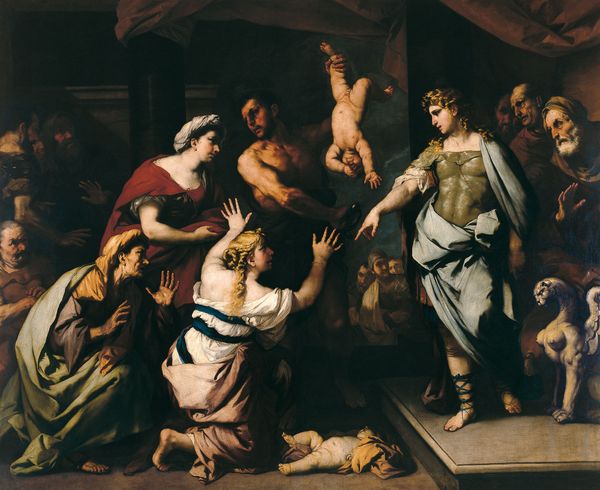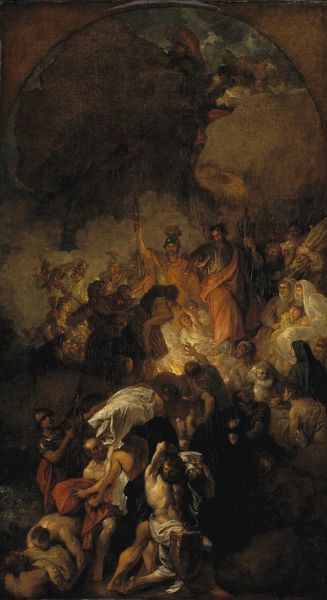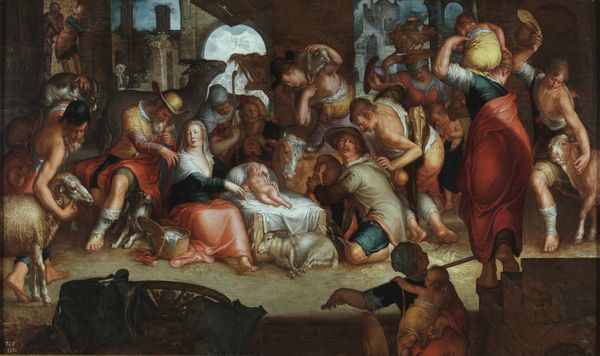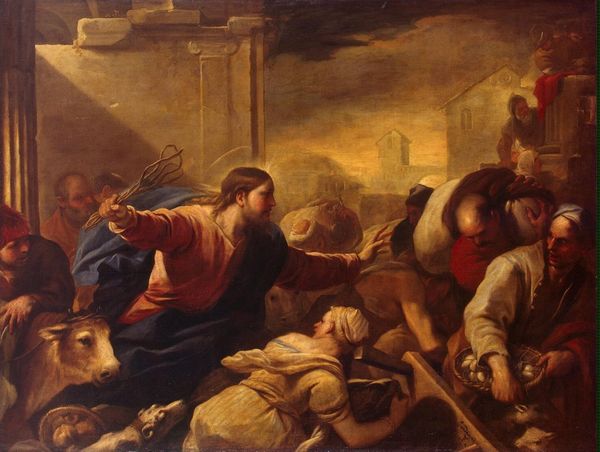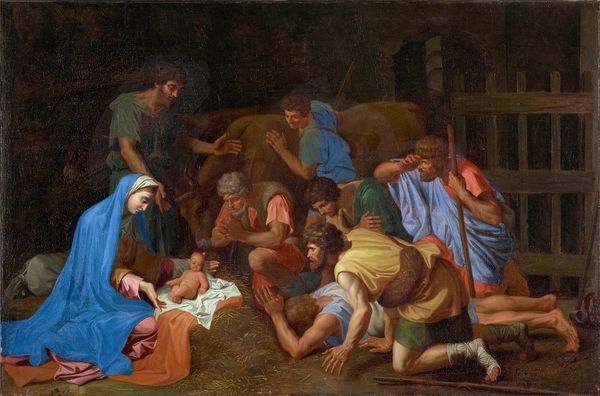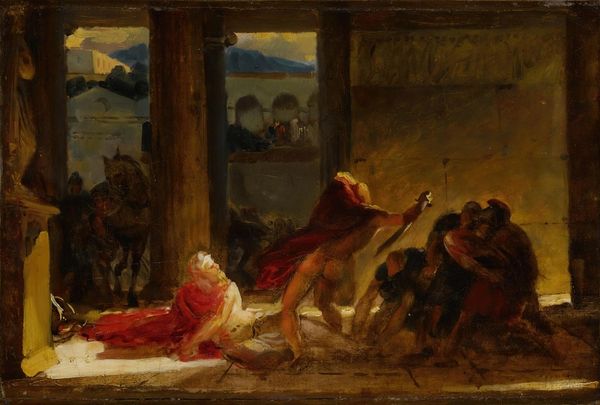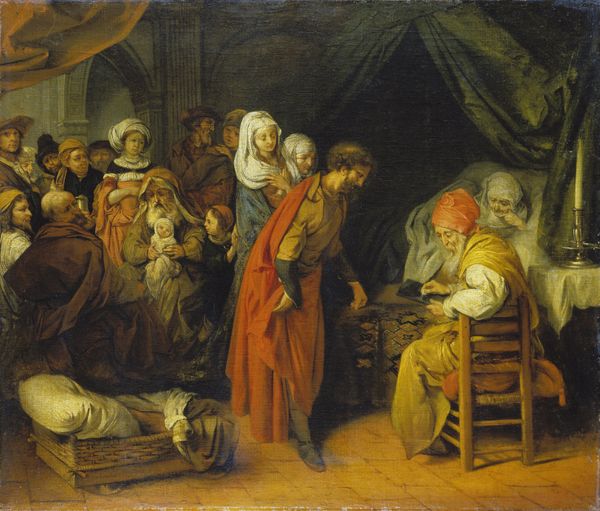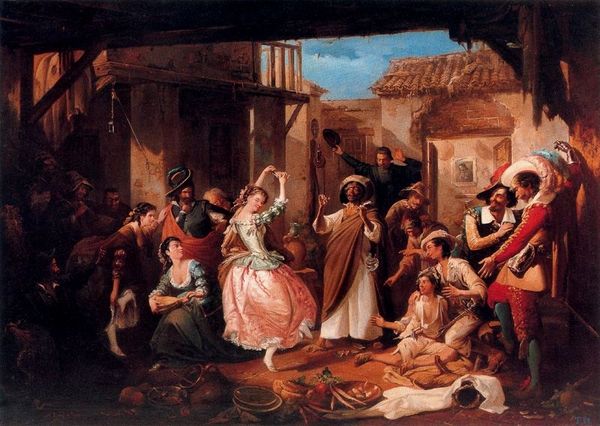
Copyright: Public domain
Editor: Konstantin Flavitsky’s “Christian Martyrs in the Colosseum,” painted in 1862, is… well, it's intense. All that frantic energy seems captured so vividly in oil paint. It's hard to ignore the dramatic use of light. What’s your perspective on this, considering its historical context? Curator: What stands out is how the artist, through the materiality of oil paint, constructs a narrative around labor and consumption within the context of 19th-century Russian society. Flavitsky, using this expensive material, represents a scene of ultimate suffering - martyrdom - for likely wealthy patrons to consume visually. What does the material representation of suffering do in this social climate? Editor: I hadn't thought about it that way, the consumption of suffering... So, the fact that it's oil on canvas, rather than, say, a wood carving destined for the church, changes the way we should understand it? Curator: Precisely. Oil paint, traditionally a medium of the elite, elevates the subject. But doesn’t also risk commodifying the profound sacrifice depicted? Consider also the labor involved, not just in the lives of these imagined martyrs, but in the creation of this illusion on canvas. Editor: That's a powerful point. It sort of puts the act of painting, and the act of viewing, into question, doesn’t it? Curator: Exactly! The painting is no longer simply a religious or historical scene. It becomes a document of social stratification, artistic labor, and the consumable nature of tragedy. Do you see how the artist’s *choice* of material emphasizes these layers? Editor: Definitely. Thinking about it that way adds a whole new dimension to the piece. Thanks, that was enlightening. Curator: Likewise! It is fascinating to see old masters being updated into contemporary concepts.
Comments
No comments
Be the first to comment and join the conversation on the ultimate creative platform.
